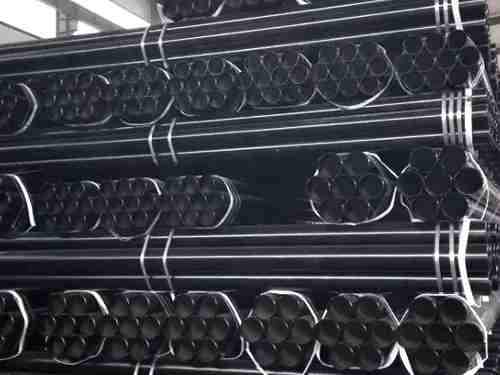H-beam is an economical section and high-efficiency profile with more optimized cross-sectional area distribution and more reasonable strength-to-weight ratio. It is named because its cross section is the same as the English letter "H". Since all parts of H-beam are arranged at right angles, H-beam has the advantages of strong bending resistance, simple construction, cost saving and light structure in all directions, and has been widely used
The section shape is similar to an economical section profile of the capital Latin letter H, also known as universal steel beam, wide edge (edge) I-beam or parallel flange I-beam. The cross-section of H-beam usually includes two parts, the web plate and the flange plate, also known as the waist and the edge.
Features
The inner and outer sides of the flange of H-beam are parallel or nearly parallel, and the flange ends are at right angles, so it is named parallel flange I-beam. The thickness of the web of the H-beam is smaller than that of the common I-beam with the same height of the web, and the flange width is larger than that of the common I-beam with the same height of the web, so it is also named wide-edge I-beam. Determined by the shape, the section modulus, moment of inertia and corresponding strength of H-beam are obviously better than ordinary I-beam of the same single weight. Used in metal structures with different requirements, whether it is subjected to bending moment, pressure load, or eccentric load, it shows its superior performance. Compared with ordinary I-beam, it can greatly improve the bearing capacity and save 10% to 40% of metal. H-beams have wide flanges, thin webs, many specifications, and flexible use. They can save 15% to 20% of metal when used in various truss structures. Because the inner and outer sides of the flanges are parallel, and the edge ends are at right angles, it is easy to assemble and combine into various components, which can save about 25% of the welding and riveting workload, which can greatly speed up the construction speed of the project and shorten the construction period.
use
Due to the above advantages, H-beams are widely used, mainly used for: various civil and industrial building structures; various large-span industrial plants and modern high-rise buildings, especially industrial plants in areas with frequent seismic activity and high temperature working conditions; requirements Large-scale bridges with large bearing capacity, good section stability and large span; heavy equipment; highways; ship skeletons; mine support; foundation treatment and embankment engineering; various machine components
Classification
There are many product specifications of H-beam, and the classification methods are as follows. (1) According to the flange width of the product, it is divided into wide flange, middle flange and narrow flange H-beam. The flange width B of wide flange and middle flange H-section steel is greater than or equal to the web height H. The flange width B of the narrow flange H-beam is approximately equal to one-half of the web height H. (2) According to product use, it is divided into H-shaped steel beam, H-shaped steel column, H-shaped steel pile, and extremely thick flange H-shaped steel beam. Sometimes parallel leg channels and parallel flange T-beams are also included in the scope of H-beams. Generally, the narrow flange H-beam is used as the beam material, and the wide-flange H-beam is used as the column material. (3) According to the production method, it is divided into welded H-beam and rolled H-beam. (4) According to the size, it is divided into large, medium and small H-beams. Usually, products with a web height H above 700mm are called large, those with a height of 300 to 700mm are called medium, and those with a height of less than 300mm are called small. By the end of 1990, the world's largest H-beam had a web height of 1200mm and a flange width of 530mm.

 English
English Español
Español











